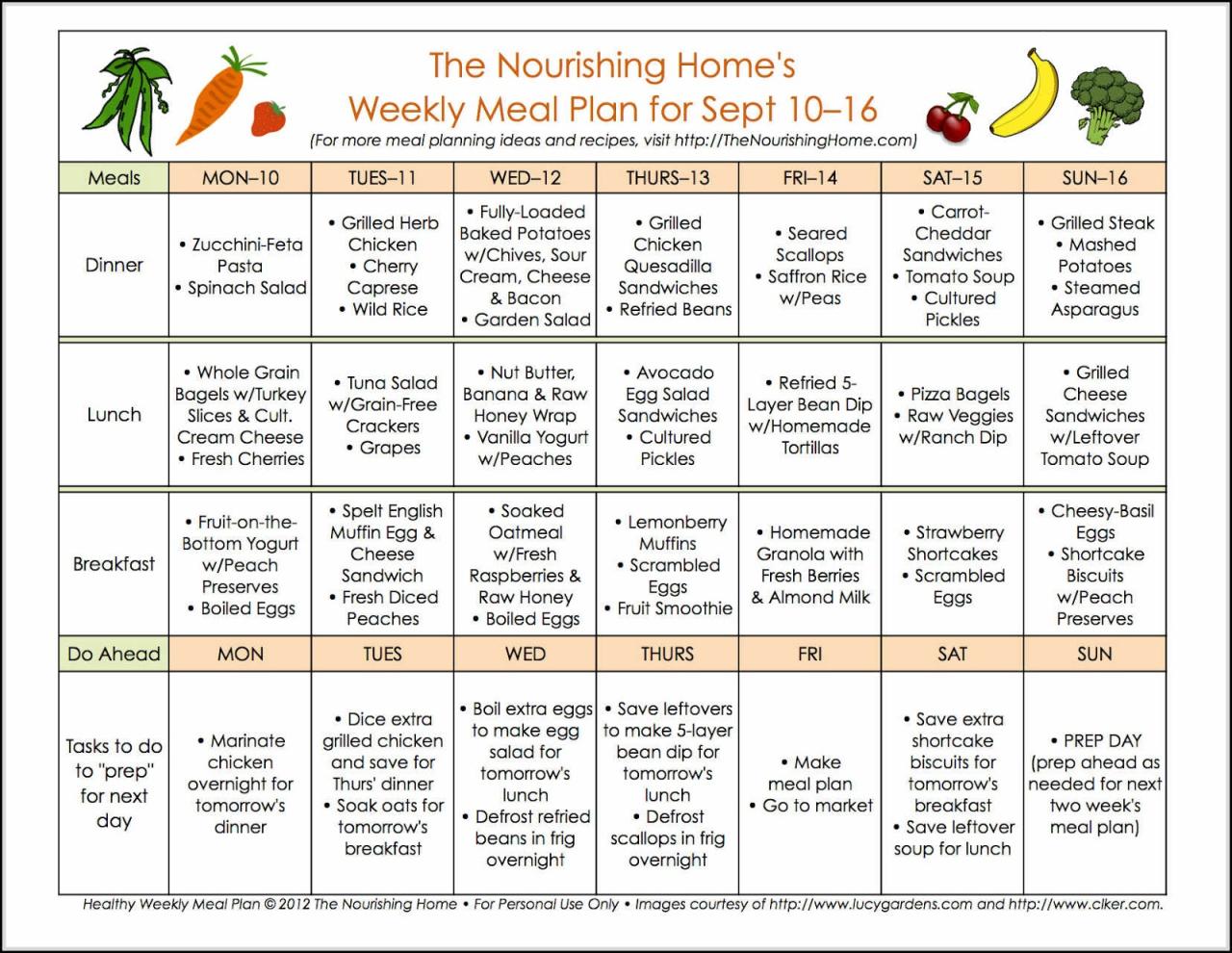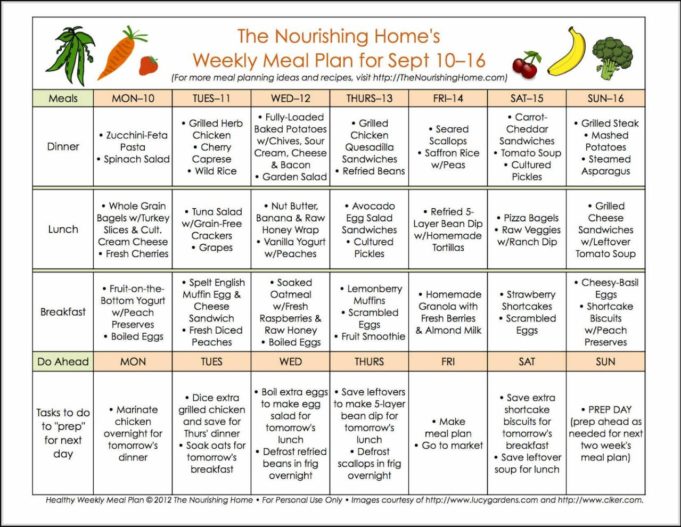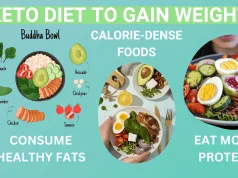How to stick to a diet? It’s a question that has plagued humanity since the invention of the donut. But fear not, dear reader, for we’re about to embark on a journey to conquer those cravings and achieve your dietary goals.
Imagine a world where you can indulge in a slice of pizza without feeling guilty, where the siren song of a chocolate chip cookie is just a whisper in the wind. This guide is your map to navigating the treacherous terrain of diet land, armed with strategies that are both effective and, dare we say, enjoyable.
From understanding your goals to overcoming those pesky temptations, we’ll cover everything you need to know to make this journey a success. We’ll even sprinkle in a few fun facts and anecdotes to keep you entertained along the way.
So, buckle up, grab your water bottle, and let’s get started!
Understanding Your Diet Goals

Dieting is a journey, not a race. It’s about making sustainable changes to your eating habits, not just shedding pounds quickly. Setting realistic and achievable goals is crucial for success. When you set realistic goals, you’re more likely to stick to your diet plan and see results.
This can lead to improved health, increased energy levels, and a more positive body image.
SMART Diet Goals
It’s helpful to set SMART goals, which are:
- Specific:Clearly define what you want to achieve. For example, instead of saying “I want to lose weight,” say “I want to lose 1-2 pounds per week.”
- Measurable:Track your progress so you can see how far you’ve come. Use a food journal, a fitness tracker, or a scale to monitor your progress.
- Achievable:Set goals that are challenging but attainable. Aim for small, gradual changes rather than drastic overhauls.
- Relevant:Ensure your goals align with your overall health and wellness objectives.
- Time-bound:Set a deadline for reaching your goal. This can help you stay motivated and focused.
Benefits of Consulting a Registered Dietitian or Nutritionist
Seeking professional guidance from a registered dietitian or nutritionist can significantly enhance your diet journey. These professionals are trained to provide personalized advice based on your individual needs, preferences, and health conditions.
Sticking to a diet is like trying to herd cats – chaotic and unpredictable. But just like those furry felines, our bodies have their own needs. One of those needs is managing cholesterol, which can be tackled with a smart dietary approach.
For some tips on how to lower your cholesterol through diet, check out this helpful resource: how to low the cholesterol with diet. Once you’ve got the cholesterol under control, you can focus on the fun part of dieting – like finding new recipes and trying out different cuisines!
- Personalized Diet Plans:A registered dietitian can create a customized diet plan that aligns with your goals and health status, taking into account any allergies, intolerances, or medical conditions.
- Nutritional Guidance:They can provide expert advice on making healthy food choices, understanding portion sizes, and incorporating a variety of nutrient-rich foods into your diet.
- Support and Accountability:Having a professional to guide you can provide motivation, accountability, and support throughout your journey, making it easier to stay on track.
- Addressing Underlying Issues:They can help identify and address any underlying nutritional deficiencies or health concerns that may be contributing to your weight or health issues.
Building a Sustainable Diet Plan
You’ve got your goals, now it’s time to build a diet plan that’s as unique as you are. This isn’t about restrictive fad diets; it’s about creating a lifestyle that nourishes your body and soul.
Creating a Balanced and Nutritious Diet Plan
A balanced diet is like a delicious symphony of nutrients, with each food group playing its part. Here’s how to create your own masterpiece:
- Focus on Whole Foods:Think fruits, veggies, lean proteins, whole grains, and healthy fats. These are the building blocks of a healthy diet. Imagine them as the “lead singers” of your symphony.
- Limit Processed Foods:Processed foods are like the “background noise” of your symphony. They might be tempting, but they’re often high in sugar, unhealthy fats, and sodium.
- Portion Control:This is like the “conductor” of your symphony, ensuring that each food group gets its moment in the spotlight, but not too much.
- Mindful Eating:Pay attention to your hunger cues and eat when you’re truly hungry, not just bored or stressed. This is like appreciating the “nuances” of each musical note in your symphony.
Sample Weekly Meal Plan
Here’s a sample weekly meal plan to get you started. Remember, this is just a guideline. Feel free to adjust it to fit your preferences and dietary needs.
| Day | Breakfast | Lunch | Dinner |
|---|---|---|---|
| Monday | Oatmeal with berries and nuts | Tuna salad sandwich on whole-wheat bread with a side salad | Grilled chicken breast with roasted vegetables and quinoa |
| Tuesday | Yogurt with granola and fruit | Leftover chicken breast with salad | Lentil soup with whole-wheat bread |
| Wednesday | Scrambled eggs with whole-wheat toast and avocado | Turkey and cheese wrap with veggies | Salmon with steamed broccoli and brown rice |
| Thursday | Smoothie with fruit, yogurt, and spinach | Leftover salmon with salad | Vegetarian chili with cornbread |
| Friday | Pancakes with fruit and syrup | Pizza with whole-wheat crust and veggies | Pasta with marinara sauce and meatballs |
| Saturday | Breakfast burrito with eggs, beans, and veggies | Leftover pasta | Grilled steak with sweet potato fries |
| Sunday | French toast with fruit | Leftover steak with salad | Chicken stir-fry with brown rice |
Incorporating Healthy Snacks
Healthy snacks are like the “interludes” in your symphony, keeping your energy levels up and preventing overeating at meals.
- Fruit:Apples, bananas, oranges, berries, grapes – nature’s sweet treats.
- Veggies:Carrots, celery, cucumbers, bell peppers – crunchy and satisfying.
- Nuts and Seeds:Almonds, walnuts, sunflower seeds – packed with healthy fats and protein.
- Yogurt:A good source of protein and calcium, especially Greek yogurt.
Staying Hydrated, How to stick to a diet
Water is the “conductor” of your body, keeping everything running smoothly. Aim for 8 glasses of water a day.
“Staying hydrated is crucial for maintaining a healthy weight, regulating body temperature, and improving digestion.”
Overcoming Common Diet Challenges
Sticking to a diet can be tough, even with the best intentions. You’ve got your plan, you’re motivated, but then life throws you a curveball. It’s easy to get derailed by cravings, social situations, or even just a bad day.
But don’t worry, it’s not about being perfect; it’s about learning how to navigate these common challenges and build lasting healthy habits.
Managing Cravings
Cravings are a powerful force, and they can make even the most dedicated dieter feel like they’re on a sinking ship. The good news is that you can learn to manage them. Think of cravings as a wavethey come and go.
The trick is to ride the wave without getting swept away.
- Distract Yourself:When a craving hits, do something to take your mind off of it. Go for a walk, listen to music, or call a friend. Sometimes, simply changing your environment can help.
- Delay Gratification:Tell yourself you’ll wait 15 minutes before giving in to the craving. Often, the urge will pass by the time the clock runs out. If it doesn’t, at least you’ve given yourself time to make a more conscious decision.
- Plan Ahead:If you know you’re going to be around tempting foods, have a healthy snack or meal ready to go. This way, you won’t be caught off guard and tempted to make a poor choice.
Navigating Social Situations
Social situations can be tricky when you’re trying to stick to a diet. Parties, dinners, and even just hanging out with friends can present challenges. But with a little planning, you can navigate these situations without sacrificing your goals.
- Don’t Be Afraid to Say No:It’s okay to decline unhealthy foods. You can politely say, “No, thank you, I’m trying to watch my sugar intake,” or “I’m good, thanks. I’m full.”
- Bring Your Own:If you’re going to a potluck or a party, bring a healthy dish to share. This way, you’ll have something healthy to eat, and you’ll also be contributing to the party.
- Focus on the Company:Remember that the most important part of a social gathering is the company. Don’t let food be the center of your attention. Engage in conversation, play games, or enjoy the company of your friends.
Emotional Eating
Emotional eating is a common challenge that can sabotage even the best diet plans. When we’re feeling stressed, sad, or bored, we may turn to food for comfort. But this can lead to overeating and unhealthy food choices.
- Identify Your Triggers:What situations or emotions tend to lead you to emotional eating? Once you know your triggers, you can start to develop strategies for dealing with them.
- Find Healthy Coping Mechanisms:Instead of turning to food, try other ways to manage your emotions. Go for a walk, listen to music, talk to a friend, or write in a journal.
- Practice Self-Care:Taking care of yourself physically and emotionally can help you resist emotional eating. Get enough sleep, exercise regularly, and eat a healthy diet.
Finding Support and Accountability
It’s much easier to stick to a diet when you have support. Surround yourself with people who encourage your healthy choices and hold you accountable.
- Join a Support Group:Connecting with others who are going through similar challenges can provide motivation and understanding.
- Work with a Coach:A coach can help you set goals, track your progress, and stay on track. They can also provide personalized advice and support.
- Share Your Goals:Tell your friends and family about your diet goals. Their support and encouragement can make a big difference.
Cultivating Healthy Habits
Sticking to a diet is a marathon, not a sprint. While a well-crafted diet plan is essential, it’s the daily habits you cultivate that truly determine long-term success. Think of it like building a house: you need a solid foundation (your diet plan), but it’s the bricks and mortar of consistent healthy choices that make it a truly lasting structure.
Incorporating Regular Physical Activity
Exercise isn’t just about shedding pounds; it’s a vital ingredient for a healthy and happy life. Regular physical activity boosts your metabolism, improves your mood, strengthens your bones, and helps you manage stress. It also makes your diet plan more effective by burning calories and building muscle mass.
Sticking to a diet can be tough, especially when your willpower is weaker than a wet noodle. But don’t despair! There are tons of resources out there to help you find the best weight loss plan for your unique needs.
Once you’ve found your perfect match, remember that consistency is key. Think of it like brushing your teeth – you wouldn’t skip a day, right? So, keep at it, and soon you’ll be strutting your stuff with a newfound confidence and a smile that shines brighter than a thousand suns.
Making Healthy Choices at Restaurants and Social Gatherings
Navigating the temptations of restaurant menus and social gatherings can be a real challenge. But with a little planning and mindfulness, you can enjoy yourself without derailing your diet goals.
- Choose wisely:Opt for grilled, baked, or steamed dishes over fried or creamy options. Look for lean protein sources like fish, chicken breast, or tofu, and load up on vegetables.
- Portion control:Don’t be afraid to ask for a “to-go” box and pack half your meal before you start eating. This helps you avoid overindulging and allows you to enjoy the rest later.
- Mindful sipping:Stick to water or unsweetened beverages instead of sugary sodas or alcoholic drinks. These can add a significant number of empty calories to your meal.
Managing Stress and Improving Sleep Quality
Stress and sleep deprivation can wreak havoc on your diet. When you’re stressed, your body produces cortisol, a hormone that can lead to cravings for sugary and fatty foods. Lack of sleep also disrupts your hormone balance, making you more likely to overeat.
- Stress management techniques:Practice relaxation techniques like deep breathing, meditation, or yoga. Engage in activities you enjoy, such as reading, listening to music, or spending time in nature.
- Sleep hygiene:Establish a regular sleep schedule, even on weekends. Create a relaxing bedtime routine that helps you unwind. Avoid caffeine and alcohol before bed, and make sure your bedroom is dark, quiet, and cool.
Tracking Progress and Making Adjustments
It’s time to put your detective hat on, because we’re about to dive into the exciting world of tracking your progress and making adjustments to your diet plan. This is where you become the master of your own dietary destiny!
Monitoring Your Progress
Regularly monitoring your progress helps you understand what’s working and what needs a tweak. It’s like checking your dashboard while driving – you need to know how your body is responding to your new dietary choices.
- Weigh yourself weekly:This gives you a general overview of your weight loss or gain. But remember, weight fluctuations can happen due to factors like water retention, so don’t freak out if you see a slight jump one week.
- Take measurements:Track your waist, hips, and other areas where you’d like to see changes. This can be more insightful than just focusing on the scale, as it reflects changes in body composition.
- Track your energy levels:How do you feel after meals? Are you experiencing more energy throughout the day? This is a valuable indicator of how your body is adapting to your diet.
- Keep a food journal:This is your secret weapon for understanding your eating habits. Note down everything you eat, the portion sizes, and how you feel afterward. This helps identify potential triggers for cravings and overeating.
Identifying Areas for Improvement
Once you’ve gathered data on your progress, it’s time to put on your analytical hat and identify areas where you can fine-tune your diet plan.
Sticking to a diet is like trying to herd cats – you can try to guide them, but they’ll often do their own thing. The key is to find a plan that works for you, and that might involve a little bit of how to lose weight research.
Once you’ve got your plan, be patient, be consistent, and remember that it’s okay to indulge occasionally – just don’t let those indulgences turn into a full-blown cat fight with your diet goals!
- Are you consistently hitting your calorie goals?If you’re not losing weight, you might be consuming more calories than you burn. Consider reducing your portion sizes or making healthier food choices.
- Are you getting enough nutrients?Look for gaps in your diet. Are you lacking in essential vitamins, minerals, or fiber? Adjust your meal plan to incorporate more of these nutrients.
- Are you experiencing any negative side effects?If you’re feeling constantly hungry, experiencing digestive issues, or noticing any other unpleasant side effects, it’s time to revisit your diet plan and make adjustments.
- Are you finding it hard to stick to your plan?Don’t be afraid to make changes to your diet plan if it’s not sustainable. The key is to find a plan that works for you and your lifestyle.
Last Point: How To Stick To A Diet
Sticking to a diet doesn’t have to be a chore. It’s about finding a sustainable approach that works for you, celebrating your successes, and learning from any bumps in the road. Remember, it’s a marathon, not a sprint.
With a little patience, persistence, and a sprinkle of humor, you’ll be well on your way to achieving your dietary goals and feeling your best. So go forth, conquer those cravings, and enjoy the journey!
FAQ Summary
What if I slip up and eat something unhealthy?
Don’t beat yourself up! Everyone makes mistakes. Just get back on track with your next meal or snack. Remember, it’s about progress, not perfection.
How do I deal with cravings?
Distract yourself with an activity you enjoy, drink a glass of water, or have a healthy snack. Cravings usually pass after a few minutes.
What if I don’t have time to cook healthy meals?
Plan ahead and prep meals in advance. You can also opt for healthy pre-made meals or grab-and-go snacks.
























